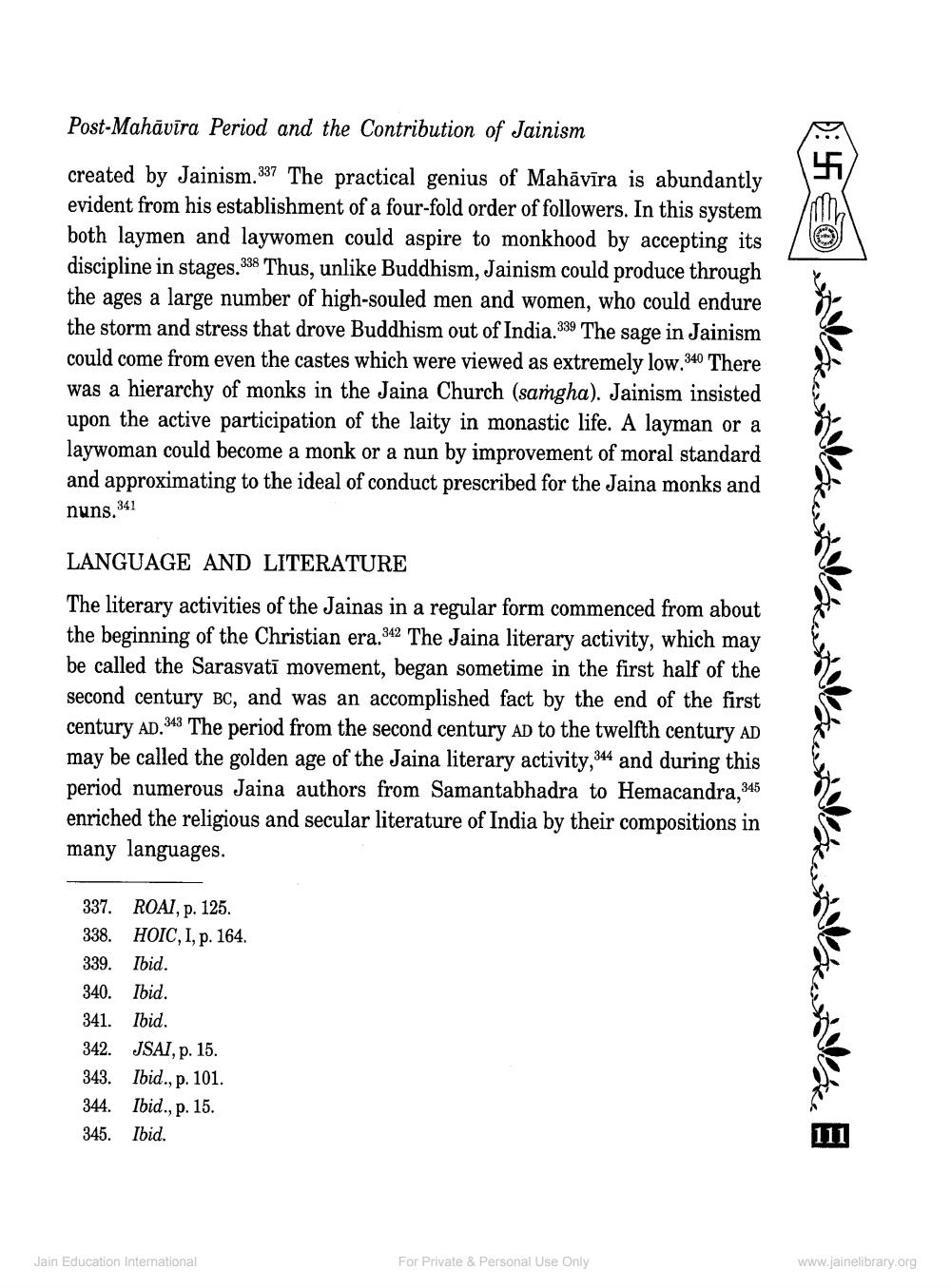________________
Post-Mahāvīra Period and the Contribution of Jainism
created by Jainism.337 The practical genius of Mahāvīra is abundantly evident from his establishment of a four-fold order of followers. In this system both laymen and laywomen could aspire to monkhood by accepting its discipline in stages.338 Thus, unlike Buddhism, Jainism could produce through the ages a large number of high-souled men and women, who could endure the storm and stress that drove Buddhism out of India. 339 The sage in Jainism could come from even the castes which were viewed as extremely low.340 There was a hierarchy of monks in the Jaina Church (saṁgha). Jainism insisted upon the active participation of the laity in monastic life. A layman or a laywoman could become a monk or a nun by improvement of moral standard and approximating to the ideal of conduct prescribed for the Jaina monks and nuns.341
LANGUAGE AND LITERATURE The literary activities of the Jainas in a regular form commenced from about the beginning of the Christian era. 342 The Jaina literary activity, which may be called the Sarasvatī movement, began sometime in the first half of the second century BC, and was an accomplished fact by the end of the first century AD.343 The period from the second century AD to the twelfth century AD may be called the golden age of the Jaina literary activity,344 and during this period numerous Jaina authors from Samantabhadra to Hemacandra, 345 enriched the religious and secular literature of India by their compositions in many languages.
337. ROAI, p. 125. 338. HOIC, 1, p. 164. 339. Ibid. 340. Ibid. 341. Ibid. 342. JSAI, p. 15. 343. Ibid., p. 101. 344. Ibid., p. 15. 345. Ibid.
Jain Education International
For Private & Personal Use Only
www.jainelibrary.org




